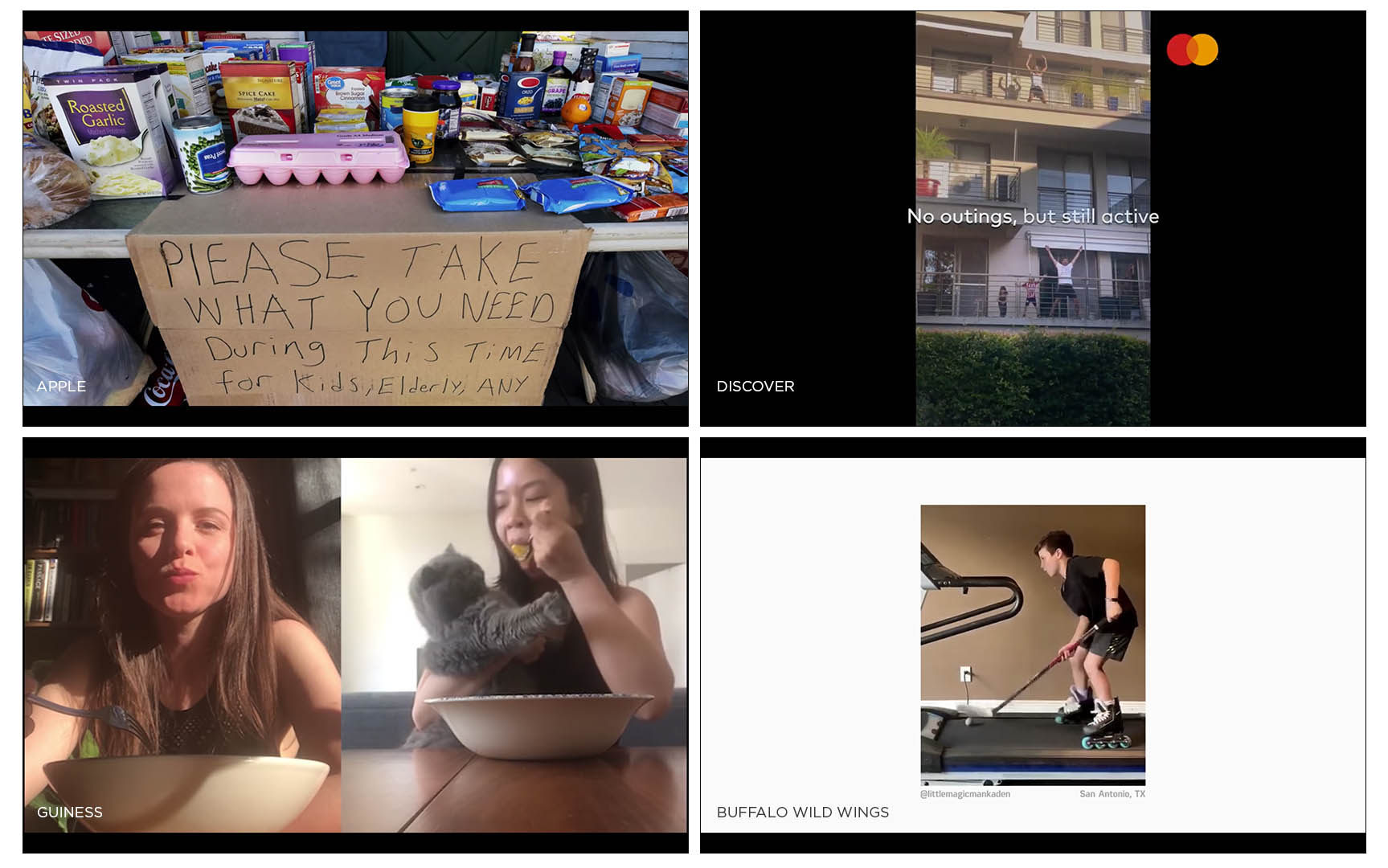User-Generated Content: UGC in a 2020 WFH World
COVID 19. WFH. UGC.
All of these are abbreviations that you’ve seen and heard a lot about lately. And they’re pretty interconnected to each other in many ways - including in video production. The actions taken by many states during the outbreak of the coronavirus pandemic have caused many businesses to work from home. And although this is the case, these now remotely operating businesses are still looking for new ways to advertise and connect with their audience through video.
What is UGC?
User Generated Content, or UGC for short, is actually pretty self explanatory. It’s a piece or multiple pieces of content created and submitted entirely by users of an online platform or wiki. For example, a brand’s twitter account could start a hashtag asking for their followers to submit videos or photos of their pets at home using the hashtag #PetsLife (creative, I know). All of these videos and photos that are posted can then be gathered by the brand and turned into another piece of content entirely. This end product could be a collage, photo slideshow or more commonly, a video.
Benefits of UGC
Due to the recent societal changes taken to combat the spread of COVID 19, UGC pieces are popping up all over social media and broadcast advertisements. Since many states are requiring businesses to work from home it severely limits the ability to film video on location. Also, most places aren’t sitting on a lot of relevant content to post during a pandemic. With this as the case, many marketers are looking to their own followers to make something out of nothing and send a message during this unprecedented time. An added benefit of the age that we live in is the fact that many people own a smartphone. Smartphone video has never looked better or been easier for the average person to pick up and record. This, combined with everyone being cooped up in their houses looking for new things to do have really primed the market for this otherwise uncommon style.
Challenges of UGC
Along with these advantages that make UGC such a great option for content during this time, there are some challenges as well. The first being - you have to hope for participation. By using a UGC route, you are relying on content to be submitted by users and you are hoping that content fits any narrative you were hoping to achieve. And once you get that content - the average person doesn’t have a barrage of production equipment to use when recording their content. There’s no true way to match the full potential of professional video equipment even with today’s newest smartphones, but there are a few steps that can be taken to maximize the quality of the video. (We actually have a guide where we outline these steps that can be downloaded here.) Taking these steps will result in better looking video and better sounding audio, even if it still doesn’t seem like something straight out of Hollywood. There are also the challenges of gathering and compiling all of these user submitted pieces of content. Cloud based storage systems like Dropbox or Google Drive can be great solutions to contain all of the submissions in one place, that way they can be downloaded by the editor at any time. Once all of the content is collected, it can be another challenge to form all of these separately recorded pieces into a single cohesive project. For example, if you follow our guide, you’ll see that the best orientation for smartphone video is horizontal. Even with this as the case, there may still be a few submissions that were filmed vertically. If you don’t want to rule those pieces out, you have to figure out a way to conform vertical to horizontal, horizontal to vertical or some other option that you’re conforming both to. This can make a UGC project suddenly become very tedious in the post production stages. This is why it’s best to plan out what you want this final product to look like before anything is submitted, that way you can instruct users as specifically as possible and hopefully save a lot of time when you’re putting everything together.
Examples of UGC
 There is already a plethora of companies that have produced videos featuring user generated content during the COVID 19 pandemic. Facebook and Apple have both released videos with a dramatic tone, showing the humanity and raw emotion of photos and videos from everyday people. Mastercard had a similar approach, except their video was entirely comprised of user generated content, where Facebook and Apple had some shots that were clearly taken with more professional grade equipment. Jack Daniels also had a piece that included only user generated content, including the music track that is played underneath the entire time. A video from Buffalo Wild Wings takes a uniquely upbeat tone, focusing on user generated content of sports being played at home. All of these pieces do a great job of incorporating both vertical and horizontally shot video, by allowing crops to fall wherever they may or by using the same overly frame throughout.
There is already a plethora of companies that have produced videos featuring user generated content during the COVID 19 pandemic. Facebook and Apple have both released videos with a dramatic tone, showing the humanity and raw emotion of photos and videos from everyday people. Mastercard had a similar approach, except their video was entirely comprised of user generated content, where Facebook and Apple had some shots that were clearly taken with more professional grade equipment. Jack Daniels also had a piece that included only user generated content, including the music track that is played underneath the entire time. A video from Buffalo Wild Wings takes a uniquely upbeat tone, focusing on user generated content of sports being played at home. All of these pieces do a great job of incorporating both vertical and horizontally shot video, by allowing crops to fall wherever they may or by using the same overly frame throughout.
Key Takeaways
All of the previous examples show the impact that user generated content can have. Even if the footage is a little shaky or the framing isn’t perfect, you’re still able to feel something from the piece, which is always the end goal of video. Don’t let the lower video quality fool you though, it takes a lot of thought and post-production work to end up with something composed of so many individual clips that still tells a story. The biggest key to a successful UGC video is authenticity. The reason UGC can be effective at all is that real-world feeling that it can provide the viewer. Viewers are more cynical and media savvy than ever, which means the content that is shown can’t feel tampered with. People are already wary of the marketing that brands do on social media, and a UGC video that feels fake will do a lot more damage than good. Another important thing to keep in mind is proper accreditation. Most social media users would not be pleased to see a personal photo or video that they posted themselves all of the sudden on the next commercial for brand x without ever being asked. It’s crucial to ask permission before integrating any content that wasn’t specifically submitted to you AND to explain if/how the original content creator will be credited in the final piece. During this time many are experiencing an increase in stress and anxiety, which can make online outrage for an inorganic UGC piece grow exponentially. On the flip side, UGC can be some of the most relatable and touching content to watch, making it not just efficient during a period of social distancing but effective. No one knows exactly how long these times will last, but it’s a safe assumption that UGC, when done correctly, will remain useful and compelling well into the future.




